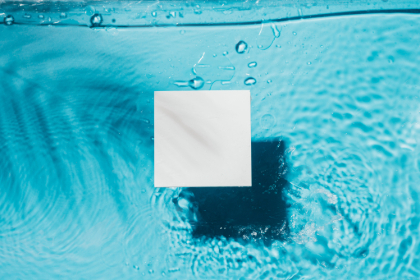Disaster Cleanup & Restoration
24/7/365 Emergency Service
Palm Desert Office: (760) 320-2128
Servicing Riverside County, CA

Document drying is more than just letting wet paper sit out—it’s a science-backed process! If you’re in need of some help because some important paperwork got damaged, this post by Daniel's DKI in Riverside County, CA will share some things to know about document drying.

When disaster strikes—whether it's a flood, fire, burst pipe, or even high humidity—valuable paper documents are often among the most vulnerable items affected. Important files such as medical records, legal paperwork, historical archives, family photos, and business documents can quickly become damaged, stained, or even destroyed by water exposure. This is where document drying comes into play. Continue reading to learn more about this crucial restoration process.
If your home has been through it, call Daniel's DKI in Riverside County, CA at (760) 320-2128 to learn about their professional restoration services and how they can assist you.
Everything About Document Drying
Document drying is a specialized restoration process that removes moisture from water-damaged paper materials. It's a critical step in preserving, recovering, and protecting documents that might otherwise be permanently lost. For businesses, government agencies, libraries, and homeowners, it can make the difference between a costly loss and a successful recovery.
Why Is It Necessary?
As you know, paper is extremely absorbent. When it comes into contact with water, it soaks it up quickly, causing swelling, ink bleeding, warping, and sticking. If not treated promptly, damp documents can develop mold or mildew, which not only damages the paper further but poses serious health risks. In extreme cases, pages can become completely illegible or fused together. Time is of the essence when documents get wet.
Call Daniel's DKI in Riverside County, CA at (760) 320-2128 for a free estimate on professional property restoration.
Methods of Document Drying
There are several techniques professionals use to restore documents depending on the extent of the damage and the type of paper involved:
1. Air Drying
The most basic method, air drying involves spreading out the documents in a controlled environment to allow natural evaporation. It works best for small amounts of damage and low-value documents.
2. Freeze Drying (Lyophilization)
This is the most effective method for recovering large volumes of wet documents. Freeze drying involves freezing the materials and then placing them in a vacuum chamber, where moisture is removed through sublimation (ice turning directly into vapor). This method helps maintain the structure and integrity of fragile or bound items like books and files.
3. Desiccant Drying
This method uses materials that absorb moisture, such as silica gel. It can be used in combination with other techniques and is effective for moderately damaged items.
4. Vacuum Thermal Drying
In this method, documents are dried under heat and pressure, which can be faster but is typically used for non-archival documents, as it may cause some distortion.
5. Vacuum Freeze Drying
Often considered the gold standard in document restoration, this process is similar to freeze drying but done under vacuum pressure. It prevents mold growth and minimizes distortion.
How to Tell if a Wet Document Can Be Saved
Not all water-damaged documents are a lost cause. In many cases, even materials that appear soaked, stuck together, or partially torn can be saved with the right drying and restoration techniques. The key is knowing what to look for and acting quickly. Here’s how to assess whether a document is salvageable:
1. Check the Type of Paper
- Glossy paper (like photo paper or magazine pages) can fuse together when wet. These may be harder to separate without damage, but specialized freeze-drying can often help.
- Standard office paper, envelopes, and file folders typically respond well to drying techniques, especially if treated quickly.
- Older or fragile documents—like archival papers, blueprints, or aged books—may require delicate handling but are often still recoverable by a professional.
2. Look for Mold or Odors
If mold is visible or a musty smell is present, the document is at higher risk—but not necessarily beyond saving. Freeze-drying or antimicrobial treatments can stop mold in its tracks. Early-stage mold doesn't automatically mean the document is lost.
3. Assess Physical Integrity
- If the ink has bled extensively or the document has disintegrated into pulp, it may be too damaged to fully restore.
- If the document is intact but damp, wrinkled, or stuck to others, it’s usually salvageable with professional drying and flattening.
4. Consider the Importance of the Document
Even if a document is severely damaged, its informational or sentimental value may justify restoration. In some cases, scanning and digital recovery are options when physical restoration isn’t possible.




